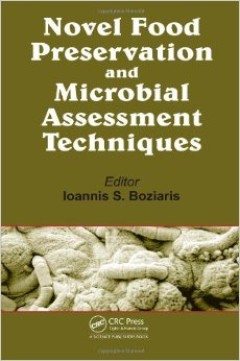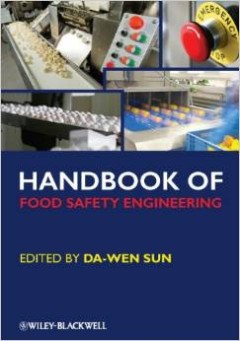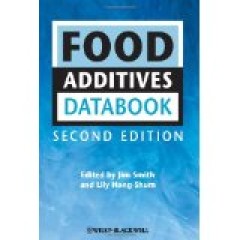Filter by

Introduction to food process engineering
- Edition
- -
- ISBN/ISSN
- 9781439809181
- Collation
- xxiii, 697 p. : ill. : ind. ; 27 cm.
- Series Title
- -
- Call Number
- 338.47664 Iba i
- Edition
- -
- ISBN/ISSN
- 9781439809181
- Collation
- xxiii, 697 p. : ill. : ind. ; 27 cm.
- Series Title
- -
- Call Number
- 338.47664 Iba i

Novel food preservation and microbial assessment techniques
Demand for minimally processed foods has resulted in the development of innovative, non-thermal food preservation methods, such as high-pressure sonication, ozone, and UV treatment. This book presents a summary of these novel food processing techniques. It also covers new methods used to monitor microbial activity, including spectroscopic methods (FT-IR and Raman), molecular and electronic nose…
- Edition
- -
- ISBN/ISSN
- 9781466580756
- Collation
- viii, 460 p. : ill. : ind. ; 24 cm.
- Series Title
- -
- Call Number
- 579.16 Nov

Handbook of food safety engineering
This book presents a comprehensive and substantial overview of the emerging field of food safety engineering, bringing together in one volume the four essential components of food safety: the fundamentals of microbial growth food safety detection techniques microbial inactivation techniques food safety management systems Written by a team of highly active international experts with both ac…
- Edition
- -
- ISBN/ISSN
- 9781444333343
- Collation
- xxiii, 840 p. : ill. : ind. ; 25 cm.
- Series Title
- -
- Call Number
- 363.19'26 Han

Food additives databook 2nd ed.
The use of additives in food is a dynamic one, as consumers demand fewer additives in foods and as governments review the list of additives approved and their permitted levels. Scientists also refine the knowledge of the risk assessment process as well as improve analytical methods and the use of alternative additives, processes or ingredients. Since the first edition of the Food Additives Data…
- Edition
- 2nd
- ISBN/ISSN
- 9781405195430
- Collation
- xvi, 1107 p. : ill. : ind. ; 26 cm.
- Series Title
- -
- Call Number
- 664.06 Foo
 Computer Science, Information & General Works
Computer Science, Information & General Works  Philosophy & Psychology
Philosophy & Psychology  Religion
Religion  Social Sciences
Social Sciences  Language
Language  Pure Science
Pure Science  Applied Sciences
Applied Sciences  Art & Recreation
Art & Recreation  Literature
Literature  History & Geography
History & Geography